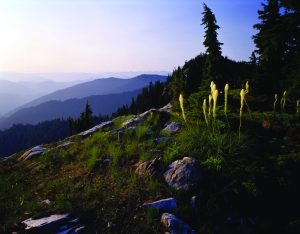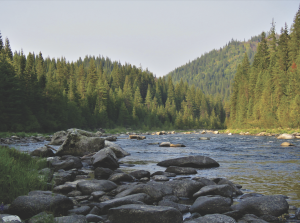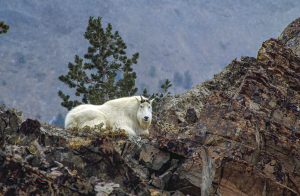Spanning four-million acres in North Central Idaho, the Nez Perce-Clearwater National Forest is a treasure trove of natural beauty and diverse ecosystems. The Forest Service is currently in the final stages of crafting a new Land Management Plan (LMP) that will shape the future of this vast tract of public land for decades to come. ICL recently completed a review of the LMP and filed an administrative objection, which provides us with an opportunity to secure changes before final approval. Let’s explore the key concerns and the importance of safeguarding this beloved national forest.

Jay Krajic photo.
Preserving Wilderness Areas
The revision of LMP’s represents an important step in the preservation of wilderness areas. During the revision process, the Forest Service can make recommendations to Congress to add new areas to the National Wilderness Preservation System. While the Forest Service modestly expanded the Mallard Larkins Recommended Wilderness and recommended a new area—East Meadow Creek, we oppose the 40,000-acre reduction in the Great Burn Recommended Wilderness. The Forest Service eliminated critical areas near Hoodoo Pass and Blacklead Mountain in order to expand snowmachine and mountain bike use. These changes are a threat to the winter survival of mountain goats and wolverines. Ensuring secure spaces for these animals is vital for maintaining a healthy and balanced ecosystem.

Protecting Rivers and Streams
The Forest Service can also recommend additions to the National Wild and Scenic Rivers System during the revision process. We are stunned that the North Fork Clearwater and South Fork Clearwater Rivers are deemed “unsuitable” for this protection. These iconic rivers and their vital fisheries should be safeguarded from potential harm caused by dams and water diversions, against which the Wild and Scenic Rivers Act safeguards. It’s crucial to recognize the intrinsic value these waterways bring to our environment in terms of recreation, clean water, and abundant fish.

Balancing Motorized Access and Wildlife Conservation
A significant concern raised by ICL revolves around the Forest Service’s proposal to expand motorized access in areas like the Moose Mountain, Pot Mountain, Bighorn-Weitas, Lochsa Face, North Fork Spruce-White Sand, and West Meadow Creek Roadless Areas. These roadless areas are designated for increased ATV, motorcycle, and snowmachine use, which will displace essential wildlife such as wolverines, mountain goats, grizzly bears, and elk. The absence of specific written directions in the plan to protect wildlife from increased motorized recreation raises questions about the sustainability of such expansion. Despite the objections filed by concerned citizens and organizations, the Forest Service contends that existing roadless areas are sufficient to protect wildlife. However, the absence of defined limits on the extent of motorized trails or riding areas leaves these critical zones vulnerable to an unlimited influx of motorized recreation. Striking a balance between recreational enjoyment and the well-being of our wildlife is crucial for ensuring the long-term health of the Nez Perce-Clearwater National Forest.
As the Forest Service reviews the objections and works to resolve concerns, it’s essential to recognize the significance of a balanced and sustainable approach to land management. The Nez Perce-Clearwater National Forest is a natural treasure that deserves careful consideration to preserve its beauty, protect its wildlife, and provide a space for both recreation, fish and wildlife. ICL will do all that it can to make sure that the final LMP is as protective as possible.
Stay updated on issues facing Idaho’s public lands, and be alerted when you can take action on behalf of them, by signing up for ICL Public Lands Campaign email updates.

